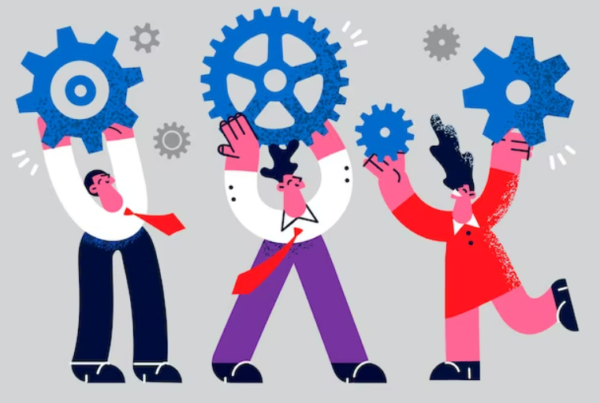Both employers and workers face new challenges and exciting growth opportunities every day in today’s workplace. The global workplace was thrown into chaos after COVID-19, remote work, and the Great Resignation. In a positive light, however, these occurrences did set the stage for progress. Plus, a lot more is going to happen in the coming year.
Key employee experience trends for 2023 include improved work-life balance, hybrid and remote work, and a focus on employees’ health and well-being. Keep reading to find out how you can lead the pack this year by fostering a productive and content workforce.
Projections for the 2023 Worker Experience
Predicted 2023 trends in the workplace – The entire employee experience will continue to evolve in the coming year. Many businesses are finding themselves understaffed after the Great Resignation, and as virtual workplaces become the norm, they need innovative strategies for attracting and retaining top talent, preventing employee turnover, and increasing output.
What follows is a discussion of the most important trends that will determine the state of the employee experience in 2023, with a special emphasis on remote workers, wellness initiatives, and retention strategies.
1. The importance of strengthening team connections in creating a rewarding work environment for employees.
About 4 million people left their jobs worldwide just last year. However, isolation was a major contributor to the Great Resignation.
The in-person working world had its flaws, but it was fantastic for building relationships, teamwork, and company culture. A company that has gone fully remote and seen no negative effects can attest to the difficulty of trying to replicate that success via remote communication tools like video conferencing and instant messaging. However, this shouldn’t detract from prioritizing efforts to foster closer team bonds.
It’s important to think about more than just having fun when tackling this. While it’s true that a positive work environment is often the result of a fun one, there are other factors at play as well that contribute to the development of solid relationships among coworkers and the success of the business as a whole. More and more businesses in 2023 will use digital tools that facilitate communication between remote teams. Employees’ emotional well-being benefits, and the team’s chances of success as a whole are enhanced by the newfound closeness.
You’ve probably heard this before: conversations around the water cooler are unusual these days. However, that is no reason to neglect your relationships. Find out how to keep in touch with teammates who are located in different locations.
2. Putting workers’ health and happiness first
Employees now anticipate that their companies will prioritize their needs, such as shorter work weeks and better benefits, as more businesses adopt employee satisfaction strategies. It is crucial to offer benefits that can be adapted to different situations. Many workers today no longer see the value in putting in extra hours simply to increase their pay.
Workers aim to advance in their careers without compromising other important aspects of their lives, including those of their families, personal time, and emotional well-being. In recent years, a growing trend in the business world has been the adoption of more flexible work hours, enabling employees to complete their tasks from home whenever it is most convenient for them.
Each of your workers has their own unique home life and routines. Employee satisfaction, engagement, productivity, and burnout can all benefit from giving workers more control over when and where they put in their time at work (with some guidance and structure, of course).
3. Iterating on the hybrid model of work
Both workers and businesses have been considering the hybrid work model for some time now. But it’s changed a lot, and now we’re at a point of refinement.
Many businesses have recently started implementing phased approaches to resuming work, leading to a mix of in-person and remote hours. It also meant more opportunities for employment, which in turn led to geographically dispersed teams working in different parts of the country or even the world. More on that to come.
Since every member of a distributed team works in their own unique way and has their own preferences, it can be difficult to achieve a seamless employee experience.
There are two main strategies that businesses have taken to solve this problem:
A lot of companies have split their teams up because they give their workers complete autonomy in making decisions and shaping the direction of the company. If employees feel more productive working from home, they have that option. While you may never have your entire team in the office at once, everyone may have a good time with this strategy.
Some organizations favor a hybrid model in which employees split their time between working virtually and coming in to the office. Using this mixed approach, you and your team can work together on projects frequently and then split up when necessary.
In 2023, your team will learn what strategies are most effective in order to establish stable, long-term practices.
4. The use of a decentralized structure for teams
Having spent considerable time at home, many workers and businesses have come to appreciate the merits of telecommuting. Employers can broaden their pool of potential employees by marketing to people across the country and the world. As an alternative to recruiting solely within a specific region, businesses can now tap into a global pool of skilled workers.
Achieving a happy medium between adaptability and closeness
It’s possible that businesses adopting this model won’t be able to afford the luxury of having their entire staff in the office on a weekly or even monthly basis. If your team is geographically dispersed and many members live far from the headquarters, you can choose the staff-splitting method for those who are local and prioritize remote work for the rest of the team.
In 2023, workers will want this freedom and independence more than ever before, but that doesn’t mean they should avoid all in-person interactions with coworkers. If you want to make connections and cultivate a great company culture, it’s a good idea to hold at least one required in-person event for everyone.
In addition to maintaining job security, remote work also gives employees more freedom to pursue personal interests and work at their own pace. Moving across the country is no longer an acceptable reason to quit one’s job.
Is your remote staff successful? Getting a sense of how your remote workers are doing and what you can do to make their lives easier requires collecting feedback, which you can do with a distributed teams survey template.
5. Improving Online Interactions
Since more and more people are working remotely, HR software is likely to undergo a dramatic shift. Human resource managers have a reputation for being hands-on leaders, but their work increasingly entails administrative tasks such as analytics, performance management, talent acquisition, payroll, expense reports, and more. HR departments can anticipate exciting new developments in HR technology that simplify managing tasks as more and more businesses adopt work-from-home models.
The trend toward remote work is improving more than just HR technology, though. More cutting-edge technology providing streamlined processes, integrated customer journey tools, increased productivity, and in-depth employee insights is likely to be a part of the entire employee journey with your organization.
Benefiting your company as a whole, digitization can enhance the experience of both your employees and your customers. Human resources departments can better plan employees’ career paths, new hires can get up to speed more quickly, and managers can head off team issues with a little bit of data analysis.
6. Boosting morale and productivity by giving workers tasks they care about
Everyone yearns for a sense that their efforts are making a difference in the world. Burnout occurs frequently in the workplace when workers have a hard time articulating the “why” behind their work. In the coming year, strategies for keeping employees around will likely put a premium on giving workers a sense of purpose in their work.
In what ways can you guide workers toward a deeper appreciation of their roles? As it stands, the jobs of your employees are meaningful enough; they play crucial roles in the success of your business. Their job wouldn’t exist if what they were doing didn’t matter. Instead, you should focus on making your staff more aware of how their work fits into the bigger picture and why it’s important to the company’s overall success.
Alignment and inspiration are the foundations of productive labor. They’re the key to getting everyone in your company working toward the same, forward-looking objectives.
7. Putting more emphasis on issues of diversity, equity, and inclusion
For all HR managers and CEOs in 2023, diversity, equity, and inclusion will be major concerns. Businesses with greater than average racial and gender diversity enjoy 43% higher profit margins than their rivals.
Stronger investment and performance rates are the result of companies with strong diversity, equity, and inclusion, which in turn produces better company landscapes with teams built for long-term, scalable success. The growing talent gap can be mitigated if human resources departments provide equal opportunities to each new hire.
There are many advantages to having a diverse workforce, but the three listed above will have the greatest impact on your organization.
8. Improving the Candidate and New Employee Onboarding Process
The hiring and onboarding processes are the starting point for employee productivity. The first few times you interact with a potential employee are pivotal moments to mold their drive, interest, and abilities. Employees learn the skills they need to do their jobs well, and it also gives employers a sense of how committed workers will be moving forward.
Imagine going on a job interview with a human resources representative who is enthusiastic about the position and your potential at the company. Your new boss makes it abundantly clear in your first few meetings how important your position is to the company’s long-term success. After that, you’ll be introduced to the appropriate coworkers at the appropriate times throughout the rest of your onboarding. This type of orientation fosters workers who are committed to giving their all on the job every day and who experience a sense of purpose in their work.
Next year, we anticipate an increase in onboarding programs that place a premium on new hires. As HR software evolves, expect to see more sophisticated and all-encompassing training options for staff members to help them get ready for their roles in the best way possible.
You need to rethink your approach to onboarding if you’re approaching it purely from an HR standpoint. Find out the elements of a successful onboarding strategy and how it can turn new hires into brand advocates right away.
9. Increasing the amount of feedback employees can provide
In-depth, helpful, and effective feedback mechanisms will become increasingly important as more companies make deliberate efforts to prioritize employee satisfaction. Consistent and specific feedback fosters a more positive work environment that recognizes and rewards improvement and dedication.
The following are just some of the areas where you can use creative methods to solicit feedback from workers and find room for improvement:
- Paid-for services and perks
- Freedom of choice in working hours
- Communication
- Workflows
- Feedback
- Onboarding
- Equal opportunity and diversity
- Good physical and mental health
- Strategies employed by managers
- Getting the team’s perspective allows you to lend aid where it’s most needed. By asking and answering specific questions, you can equip your team with the resources it needs to achieve its goals.
- A regular check-in also demonstrates to workers that you value their feedback and are looking for ways to enhance their time spent at the company.
More HR technology departments will make it a priority in 2023 to help employees grow professionally, transform ideas into actions, align teams, gain insight into where they can make improvements, and support them whenever they need it.
10. Investing in staff education and development to keep the best and brightest
Upskilling may become the method of choice in the coming year as the number of available jobs grows and companies look for innovative ways to fill high-level positions. Investing in new hires and encouraging their professional growth is an essential part of upskilling and training. Employees who are given opportunities to grow professionally within their roles are more likely to stick with your company over the long term.
Many smaller businesses that are committed to employee retention and growth now have a better chance of doing so thanks to developments in digital education and human resources technology. Online courses and certifications can help your staff members improve their skillsets and advance in their careers.
Do you have any idea of your employees’ long-term career goals? Do they require assistance in understanding? We should probably have that conversation about your professional future.
11. Adaptability in benefit design
An additional effect of the remote workplace post-pandemic is a shift in the value placed on benefits. When teams spent their days at the office, they appreciated perks like stocked vending machines, free fruit, office parties, and fitness centers that aren’t relevant when people work from home. With 2023 fast approaching, it’s time to reevaluate employee benefits in light of the feedback you’ve gathered from polling your staff.
As a result of the wide variation in cost of living, remote workers present a new challenge for employers when it comes to ensuring fair compensation. There could be one worker who pays €2,000 in Dublin rent while the rest of the team pays just €1,000 I in Cork. Larger companies frequently now adopt more localized and individualized benefit policies, taking into account the preferences of their employees wherever they may be located.
12. Considering the importance of employee participation in hybrid settings
Human connection is the single most important factor in keeping teams engaged in digital environments. When working with coworkers in different time zones or countries, it can be difficult to feel connected to one another, but there are software solutions that make this more possible every day.
An integral part of the modern hybrid workforce experience is the availability of simple and effective means of communication. This could include things like centralized dashboard planning systems, unified chat rooms, and one-on-one video conferences for your company. Collecting feedback and experimenting with different tools can help you learn about your team’s preferred approaches to technology, communication, and team engagement.
Effective meetings are a necessity in great hybrid settings. To maximize the effectiveness of your globally dispersed team, consider adopting these best practices for conducting remote meetings.
Work in the future and how employees are shaping it
In order to succeed in the business world of 2023, companies must focus on improving the employee experience. With a focus on employee engagement, retention, flexible benefits, and culturally sensitive, people-focused team experiences, businesses around the world are continuing to pave the way for future trends in employee experience.
If you ask for and act on regular, constructive feedback from employees, you can make changes that will benefit both them and your company.




